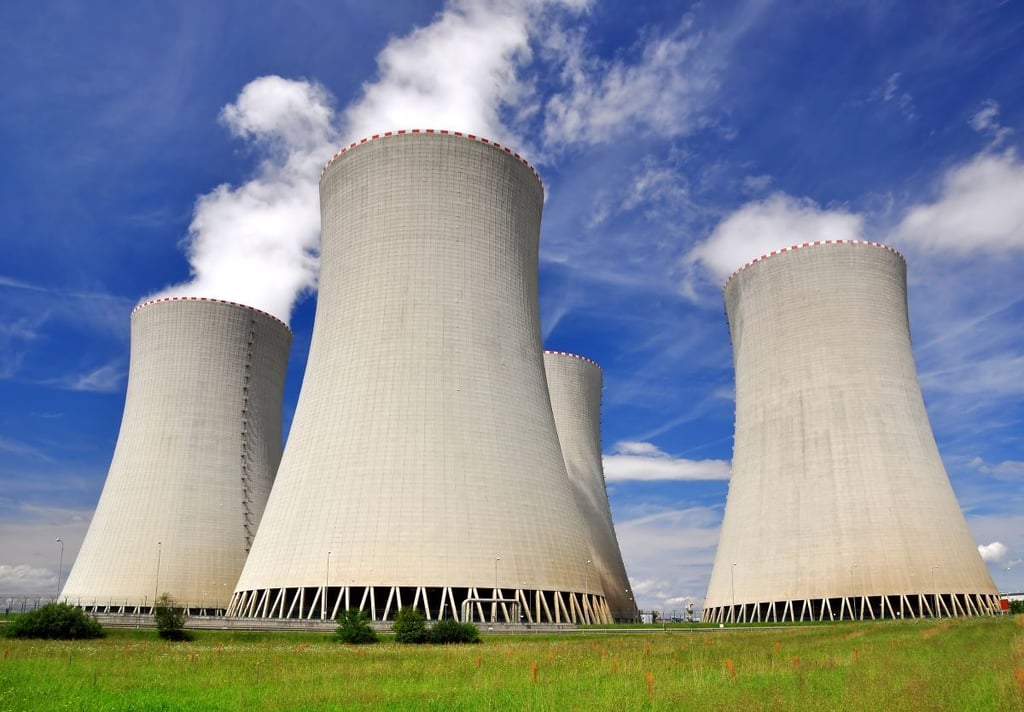Silica Sand in Power Plant Industries
Fueling Efficiency, Safety, and Sustainability


Key Applications of Silica Sand in Power Plants
1. Fluidized Bed Combustion (FBC)
Bed Material: Silica sand is used as a fluidizing medium in FBC boilers, where it suspends coal or biomass particles for efficient combustion.
Benefits: Improves heat transfer, reduces fuel consumption, and lowers NOx emissions.
- Particle Size: 0.5–1.0 mm for optimal fluidization.
2. Flue Gas Desulfurization (FGD)
Scrubbing Agent: Silica sand reacts with lime/limestone in wet scrubbers to neutralize sulfur dioxide (SO₂) emissions.
Process: Sand’s abrasive properties help maintain scrubber efficiency by preventing scaling.
3. Water Filtration Systems
Cooling Water Treatment: Silica sand filters remove suspended solids, algae, and contaminants from cooling water, preventing equipment corrosion and scaling.
Wastewater Management: Used in multi-media filters to treat plant effluents before discharge.
4. Concrete and Fireproofing
High-Performance Concrete: Silica sand reinforces turbine foundations, cooling towers, and containment structures.
Refractory Materials: Blended into fire-resistant coatings for boilers and exhaust systems.
5. Solar Thermal Energy Storage
Thermal Storage Medium: Silica sand is being tested as a low-cost, high-capacity material for storing solar heat in concentrated solar power (CSP) plants.
Benefits of Silica Sand in Power Generation
Silica sand plays a crucial role in the power generation industry, offering a multitude of benefits that enhance operational efficiency and sustainability. One of the primary advantages of silica sand is its ability to improve energy efficiency in various power generation processes. When utilized in the manufacturing of high-performance solar panels, for example, silica sand enables better light transmission and absorption, which ultimately leads to increased energy output from renewable sources.
In addition to its contribution to energy efficiency, silica sand significantly reduces maintenance costs for power generation equipment. The durability and resilient properties of silica sand help in the production of components that withstand high temperatures and abrasive conditions. By minimizing wear and tear on machinery, operators can experience longer maintenance intervals, thereby lowering operational expenses in the long run. Thus, incorporating silica sand into various applications can result in improved lifecycle costs for power generation facilities.
Moreover, silica sand's role in promoting environmentally friendly practices is noteworthy. As the push for renewable energy sources intensifies, silica sand is increasingly becoming a critical material in the production of solar energy systems, wind turbines, and other clean energy technologies. The use of silica sand supports not only the efficient generation of renewable energy but also aligns with cleaner production methods, significantly reducing the carbon footprint of power plants. These advancements emphasize the transition towards sustainable energy solutions, highlighting silica sand's importance within the industry.
In summary, the extensive benefits of silica sand in power generation are profound. From enhancing energy efficiency and reducing maintenance costs to facilitating environmentally friendly practices, this versatile material is a cornerstone in the advancement of modern power generation technologies.
Challenges in Sourcing Power Plant-Grade Silica Sand
Sourcing high-quality silica sand for power plant operations presents a variety of challenges that can significantly impact production efficiency. One of the foremost issues is supply chain disruptions, which can arise from several factors including geopolitical tensions, tariffs, or unexpected demand fluctuations. The reliance on a limited number of suppliers can also exacerbate this issue, making it difficult for power plants to maintain a steady flow of this crucial material. Consequently, any interruptions in the silica sand supply chain can create bottlenecks, thereby affecting the overall functionality of power plants.
Additionally, the extraction of silica sand is increasingly influenced by mining regulations. Stricter environmental standards are being implemented in many regions to protect natural resources, which can limit access to sand deposits. Compliance with these regulations often requires significant investment in sustainable mining practices, further complicating the procurement process for power plants. Furthermore, regulatory measures can vary widely across regions, making it essential for power plants to navigate a complex legal landscape, which can lead to increased costs and delays.
Environmental concerns associated with silica sand extraction cannot be overlooked either. The mining process can trigger habitat destruction, water depletion, and air pollution, which have all raised public awareness and opposition. As such, power plants are under pressure to adopt environmentally friendly practices, which may involve investing in more expensive, sustainably sourced silica sand. To mitigate these challenges, power plants may consider diversifying their supply sources, collaborating with local suppliers, or investing in alternatives to traditional silica sand. By proactively addressing these sourcing hurdles, power plants can ensure a consistent supply of materials necessary for their efficient operations.
Why Power Plants Trust Purnomo Silica
Purnomo Silica has established itself as a trusted supplier in the power generation industry, reflecting a commitment to quality that resonates throughout its operational ethos. The company’s dedication to providing high-grade silica sand, vital for various applications in power plants, positions it as a reliable choice among the industry's key players. Purnomo Silica focuses on maintaining consistent product quality, ensuring that customers receive silica sand that meets and often exceeds industry standards.
Moreover, Purnomo Silica emphasizes sustainable practices, a priority for many power plants striving to reduce their environmental impact. The company employs responsible mining techniques, which not only preserve local ecosystems but also contribute to sustainability in the silica supply chain. By choosing Purnomo Silica, power plants align themselves with a supplier that prioritizes environmental stewardship, a factor that increasingly influences procurement decisions in today's eco-conscious market.
Another significant advantage of partnering with Purnomo Silica is its reliable supply chain logistics. The company has invested in infrastructure and transportation networks that ensure timely deliveries, an essential feature for power plants that operate on stringent schedules. This reliability mitigates the risk of delays associated with silica sand procurement, thereby enhancing operational efficiency and allowing power plants to maintain consistent energy output.
The customer service provided by Purnomo Silica further distinguishes it from other suppliers. The company's team of experienced professionals is dedicated to supporting clients through the entire purchasing process, from initial inquiries to post-delivery service. This commitment to exceptional customer support fosters long-lasting relationships with power plants, making Purnomo Silica not just a supplier, but a valuable partner in achieving operational success.
Conclusion
In summary, silica sand plays an indispensable role in the power generation industry, serving as a critical component in various applications including groundwater filtration, cement production, and as an additive in concrete used for construction. Its unique properties, including high purity and grain size, make it particularly valuable in improving the efficiency of energy production processes. As power plants continue to evolve and seek more efficient methods to generate energy, the demand for high-quality silica sand is likely to increase substantially.
Reliable suppliers, such as Purnomo Silica, are essential in ensuring that the industry has access to the high-grade silica sand necessary for maintaining optimal performance standards. By partnering with reputable suppliers, power generation facilities can secure the quality of resources required for their operational needs while also adhering to environmental regulations and sustainability goals. This relationship is crucial as industries look to balance energy production with ecological responsibilities.
Looking ahead, the applications of silica sand within power plants are anticipated to expand further, especially as technology advances and the push for renewable energy sources grows stronger. Innovations in the usage of silica sand will likely contribute to improved operational efficiency, cost reductions, and lower environmental impact. As power plant industries navigate the complexities of modern energy demands, the significance of high-quality silica sand remains clear, solidifying its position as a vital material in ensuring reliable and sustainable energy production.
Why Silica Sand is Vital to Power Generation
Silica sand, a critical component in various industrial processes, plays an essential role in the power generation sector. It is primarily valued for its unique properties, particularly its high melting point and excellent thermal stability. These attributes make silica sand an indispensable material in manufacturing crucial components integral to the energy production process. For instance, one of the prominent applications of silica sand is in the creation of glass for solar panels, a rapidly growing energy source that reflects society’s demand for renewable and efficient power generation.
The high melting point of silica sand enables it to withstand the intense heat generated in power plants, especially in turbine casting. Turbines are vital for converting thermal energy into mechanical energy, which, in turn, generates electricity. Silica sand is utilized extensively in the casting process of these turbines, ensuring that they can endure extreme operational conditions without compromising efficiency. Therefore, the inclusion of silica sand in the casting material not only enhances durability but also improves the overall performance and reliability of power generation systems.
